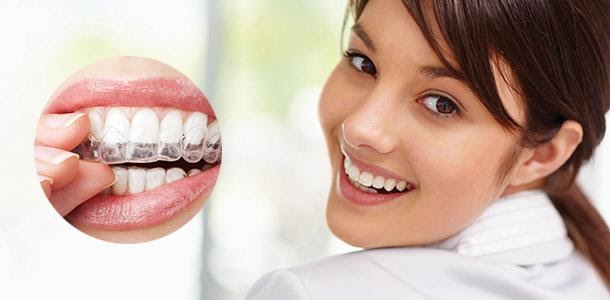5 Things People With Great Teeth Always Do

It’s a no-brainer that having yellow or stained teeth can really affect one’s self-esteem and overall health. For the genetically blessed, getting luscious pearly whites is a walk in the park. But for most of us, getting gleaming white teeth takes some effort and it’s not just in using whitening toothpaste
every once in a while.
So how exactly do we take really good care of our teeth and ensure that they look their best each time?
The Weekly spoke to Dr Chang Yu Ling, dental surgeon at Raffles Dental, to find out just how important certain oral habits are and what people with great teeth do to get them.
They Brush Their Teeth Frequently
Why should people brush their teeth and why shouldn’t they use toothpaste with “whitening effects” ?
Brushing your teeth is the most basic step in keeping your teeth strong and healthy. Brushing is one of the most effective ways of ridding your mouth of bacteria that could stain teeth and cause decay. Complete your oral hygiene routine by flossing and scraping your tongue for better breath.
Try to avoid using toothpastes that claim to have a whitening effect because they tend to contain abrasives that only reduce the appearance of stains that occur on the outer layer of the tooth, also known as extrinsic stains, without actually helping the teeth at all.
They Understand That Certain Foods Can Stain Their Teeth
What kind of stains usually impact teeth?
Stains can broadly be classified as intrinsic or extrinsic stains.
Extrinsic Stains
Extrinsic stains occur when the outer layer of the tooth, also known as the enamel, is stained. This may happen due to several factors:
- Diet. Frequently consuming colored foods like coffee, tea, cola or red wine stains your teeth over time.
- Smoking. Nicotine and tar in tobacco stains the necks of the teeth above the gum-line, giving the teeth a yellowish-brown color.
- Poor dental hygiene. Accumulated dental plaque and calculus formed on the teeth due to poor dental hygiene can turn colored, which varies between grey, yellow, black or brown.
Intrinsic Stains
Intrinsic staining takes place at the deeper layer of the enamel and the dentin, which is the tissue lying below the enamel. These stains give your teeth a yellowish or greyish hue. Similar to extrinsic stains, there are also many causes for this:
Antibiotics. Giving certain antibiotics to children whose teeth are still developing can stain their teeth, which will carry into their adult life.
Dental trauma. Teeth can be discolored from the inside out due to bleeding within the tooth itself, which decomposes and forms a blueish-brown stain.
Genetic factors. A small number of people who suffer from congenital issues may also have discolored teeth.
Environmental factors. Fluoride is known to cause teeth discoloration when consumed excessively when adult teeth are developing in children.
Age-related factors. The outer layer of the enamel on our teeth gets eroded when we turn older, exposing the dentin. As the dentin also turns yellow with age, this will our teeth appear stained.
They Seek Professional Help In Getting Good Teeth
For those not genetically blessed with great teeth, what are some dental options to consider?
Extrinsic stains are best removed through routine scaling and polishing, while intrinsic and age-related discolorations can be treated with professionally prescribed teeth whitening procedures.
Here are some teeth whitening options available:
In-office Teeth Whitening
People who wish to see instant results may prefer this option, as your teeth may turn noticeably whiter after a single session:
Before the procedure, routine scaling and polishing will be done to maximize contact between your teeth and the whitening gel.
The dentist will apply the whitening gel onto your teeth, which is then “activated” by a light source.
Multiple sessions may be required, depending on the extent of discoloration of your teeth.
Take Home Teeth Whitening Kit
A take home teeth whitening kit is an alternate option. Compared to in-office teeth whitening, results for this are more gradual, which can be seen after a few weeks.
Dental impressions will be taken to create customized trays for your teeth during your first visit.
At the second visit, the trays, together with syringes of bleaching gels prescribed by the dentist, will be given to you. A round of routine scaling and polishing will be done at this visit to ensure maximum contact between the gel and the teeth.
Depending on your teeth’s condition and the bleaching gel’s concentration, you will be required to bleach the teeth between 20 minutes to two hours daily.
They Understand How Teeth Whitening Works
What are the common myths regarding whitening and are there contra-indications to the treatment?
It is not true that whitening will thin the teeth. Gels used in professionally prescribed tooth whitening agents contain fluoride and that has shown to increase the hardness of the teeth and resistance to decay after use.
Patients with active oral disease like unhealthy gums, decayed teeth are not suitable for treatment. These need to be resolved before whitening treatments can be considered. Patients with fillings, crowns, bridges or veneers in areas to be bleached will need to know that these will not turn whiter and may need replacement when the desired shade is attained. Patients will allergies to ingredients in whitening gel are also not suitable.
They Complement Oral Treatments With Good Oral Habits
How lasting is the effect of teeth whitening?
The intrinsic whitening effect can last 2-3 years or more. However, extrinsic staining which occur after the whitening treatment can mask the inner, bleached teeth. Regular scaling and polishing and avoidance of staining food will allow the effect to last an even longer time.
